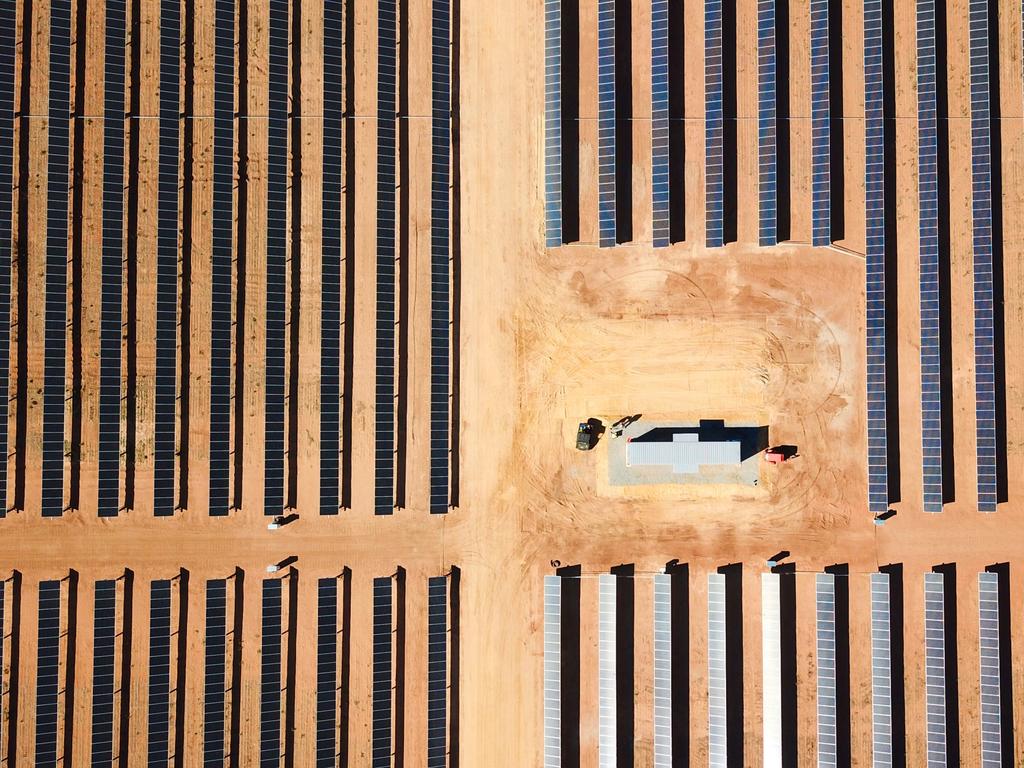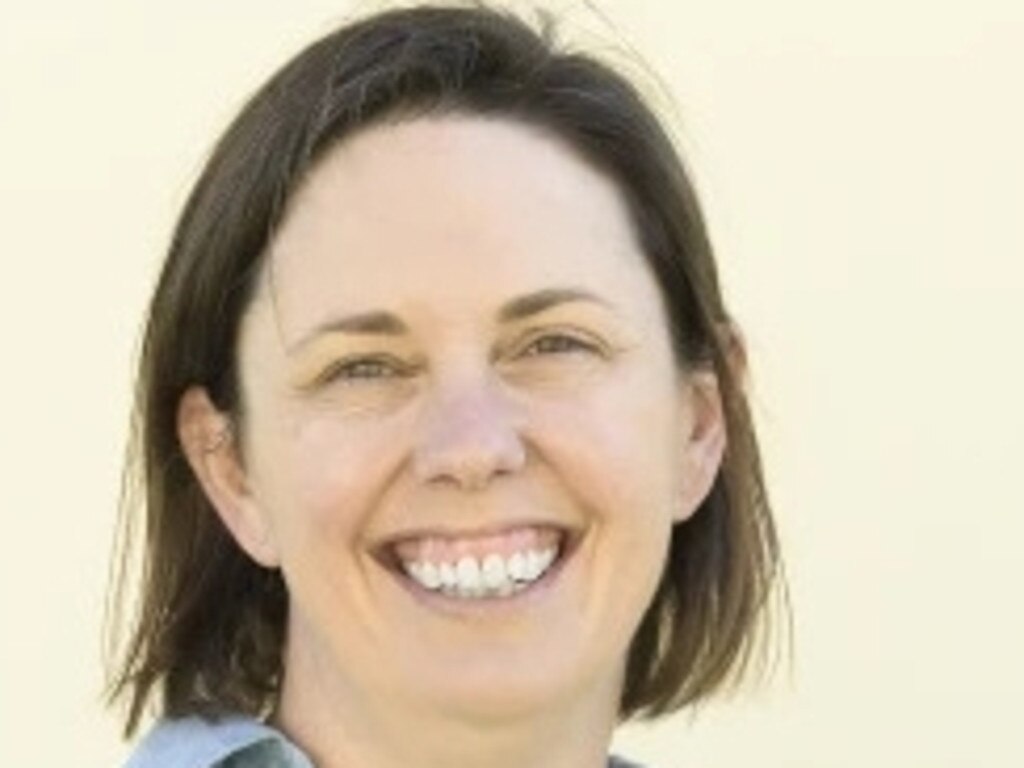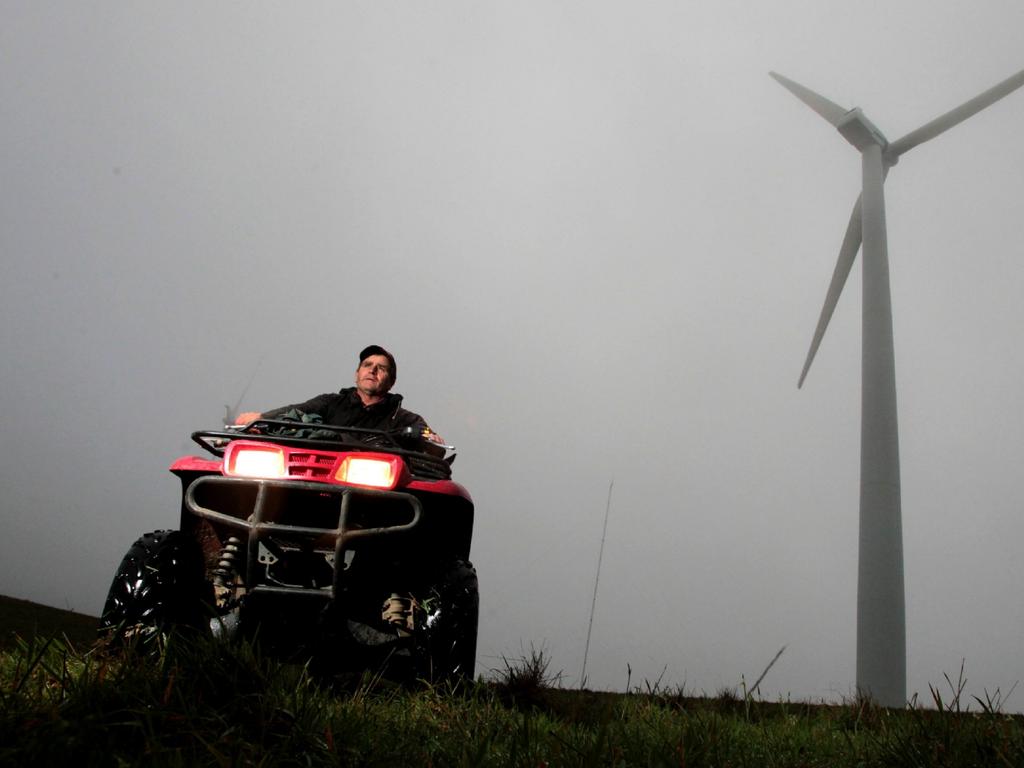Killing fields fear solar will destroy locals’ livelihoods

To reach the federal government’s target of 82 per cent renewables by 2030, the Australian Energy Market Operator predicts we will need more than 10,000km of new transmission lines, and nine times the large-scale renewable energy generation we currently have. Many of our precious rural landscapes will be changed in ways we cannot imagine. Modelling by Net Zero Australia estimates that by 2050, solar farms of a combined size of five Tasmanias will be needed to produce the energy to replace Australia’s fossil fuel exports on top of domestic consumption. We have not even begun to think about the realities of what happens to the leftover landscapes.
You would think that an energy transition of this magnitude driven by governments, subsidised by taxpayers and which will require massive dislocation to people, communities and the environment would be based on strategic, long-term planning to build electricity generation installations where they are best located. You might also think that a whole-of-system assessment of the long-term economic, social and environmental costs – not just the benefits – of large-scale renewables now and in the future would have occurred.
Yet from where we stand in rural Australia, none of this has happened.

Governments have already lost control of the location of renewables developments, which is driven by developers. In an attempt to create certainty for developers and communities, state governments have declared Renewable Energy Zones, but things are not going to plan. In NSW, approximately 70 per cent of existing large-scale solar development is located outside REZs, and this looks set to continue. This means the location of developments is ad hoc and patchy, with demands around placement of transmission lines driven by developers’ whims. Developers also ignore other planning signals. For example, the NSW Transport and Infrastructure State Environmental Planning Policy has mapped land on the outskirts of some regional cities which requires that consent authorities be satisfied that a development would not impact on land conflicts, or urban growth or important scenic values. Yet developers persist with proposals on mapped land, creating unexpected havoc for affected landholders and stakeholders.
In Goulburn in NSW, Lightsource BP proposes a 400MW solar farm on the Gundary Plain, close to the city. It is one of two solar developments that would see a total of 3600 acres – 1789 footy fields – of 1.6 million 5m-high solar panels, plus 300 inverter stations and two 330KV seven-acre substations, smack bang in the middle of a rural lifestyle locality on the fringe of the regional city.
Around the world, large-scale solar is usually developed in semi-arid, sunny regions off the beaten track – in deserts or in and around large-scale agriculture where neighbours are scarce. Yet despite relatively low solar irradiance at Goulburn, and the fact that two-thirds of the proposed developments sits on mapped land under the SEPP – a strong indicator from state planners that the proposal will adversely impact the lifestyle, views and amenities of a vast number of people – the developers press ahead with inappropriately located and self-described “grid-led” projects because an existing transmission line passes through the site. Unsurprisingly, there is zero social licence for the proposal.

Sixty impacted landowners are in uproar, and the usually pro-renewables local council and chamber of commerce look set to oppose the project. It is simply the wrong place for developments of this magnitude because of the disproportionate adverse impact on so many. So it is little wonder that a number of us whose small rural blocks will be utterly overwhelmed by a 7km-long sea of 5m-high solar panels – or whose pristine rural outlooks will be replaced by a seven-acre substation – will be protesting in Canberra next week.
These concerns are to some extent about the here and now. And our complaints about the adverse impact on our lives, sense of place, living next to a permanent heat bank and big hits to our property values are admittedly NIMBY concerns about us.
The bigger question for all of society is who carries the can 35 years down the track when Lightsource BP says the Gundary project will reach the end of its lifecycle? While consent approvals for large-scale renewables projects require the owners of renewables installations to remediate the land at the end of the lifecycle, it is becoming clear that ownership and operation of these facilities is changeable and fleeting.
Before Christmas, Lightsource BP announced that it had sold 1.04GW of Australian solar – five solar projects that comprise the entirety of its solar portfolio – to China-based Beijing Energy International Australia as part of its “normal” recycling of assets.
It is clear that BP has no interest in owning or running large-scale electricity generators.
Who knows which and what kind of entity will own and operate the Gundary solar installation in 2060? Some of us will be long gone – but on current form, BP will be gone possibly even before the construction finishes. Our bet is that ownership of Gundary and similar projects will change over time and by design end up in the hands of entities that have no incentive to put aside the tens – sometimes hundreds – of millions of dollars it will cost to remediate impacted Australian land. We think it’s just as likely as not that without taxpayer funding in 2060, the 1.6 million 5m-high solar panels slated by developers across a total of 15km sq on the Gundary Plain will be left rotting in paddocks. (And let’s not start on the fact it is more economic for solar panels to be disposed of in landfill than be recycled.)
In light of the emerging business models for development and operation in the large-scale renewables sector – which is characterised by significant offshore ownership, frequent bankruptcies and/or asset recycling – it is a scandal that state and federal governments do not insist as a condition of approval the costs of remediation of impacted land are paid upfront by developers into a government-managed fund that will guarantee remediation in the future.
So next week we will be protesting not just for ourselves but also for future generations of taxpayers who are set to bear the burden of unprecedented and crushing remediation costs over tens of thousands of square kilometres of abandoned renewables projects – after the last known entity in a long line of asset recycling has conveniently gone belly up.
More needs to be done to make the unprecedented plan to take Australia to 82 per cent renewables make more sense.
At the moment, it looks wobbly on many fronts. Insufficient attention has been paid by governments to the immediate and long-term economic, social and environmental risks and costs.
The mammoth burden of rehabilitating our precious countryside in not much more than one generation is just one example of a foreseeable consequence of a renewables-driven solution to the energy transition that governments and developers currently ignore – at the cost of all Australians, wherever they live.
Stan Moore is chair of the Save Gundary Plains Action Group, which opposes the proposed Lightsource BP and Merino Solar Farm solar developments near the regional city of Goulburn in NSW. Louise Clegg is a barrister and member of the group.







Next week, many Australians who live in rural areas on the eastern seaboard – farmers, townies, blockies, tradies, and even scientists, environmentalists, hippies and old-fashioned lovers of nature – will protest in Canberra against the intended and unintended consequences of the Albanese government’s plans to require enormous tracts of mostly privately owned land to host large-scale wind and solar farms and transmission powerlines and pipelines for future electricity generation.